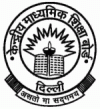
AIPMT 2012 Exam Syllabus
CHEMISTRY
Unit : 1 Some basic concepts in Chemistry
Importance of Chemistry, physical quantities and their measurement in
Chemistry, SI Units, uncertainty in measurements and use of significant figures,
Unit and dimensional analysis, Matter and its nature, laws of chemical
combinations, atomic, and molecular, masses mole concept, molar masses,
percentage composition and molecular formula, chemical stoichiometry.
Unit : 2 States of matter
Three states of matter, gaseous state, gas laws (Boyle’s Law and Charles
Law), Avogadro’s Law, Grahams’Law of diffusion, Dalton’s law of partial
pressure, ideal gas equation, Kinetic theory of gases, real gases and deviation
from ideal behaviour, van der Waals’ equation, liquefaction of gases and
critical points, Intermolecular forces; liquids and solids.
Unit : 3 Atomic structure
Earlier atomic models (Thomson’s and Rutherford) , emission spectrum of
hydrogen atom, Bohr’s model, of hydrogen atom, Limitations of Bohr’s model, dual
nature of matter and radiation, Heisenberg uncertainty principle, quantum
mechanical model of atom (quantum designation of atomic orbitals and electron
energy in terms of principal, angular momentum and magnetic quantum numbers),
electronic spin and spin quantum numbers, Pauli’s exclusion principle, general
idea of screening (constants) of outer electrons by inner electrons in an atom,
Aufbau principle, Hund’s rule, atomic orbitals and their pictorial
representation, electronic configurations of elements.
Unit : 4 Classification of elements and periodicity in
properties
Need and genesis of classification of elements (from Doebereiner to
Mendeleev), Modern periodic law and present form of periodic table, Nomenclature
of elements with atomic number > 100, electronic configurations of elements and
periodic table, electronic configuration and types of elements and s, p, d and f
blocks, periodic trends in properties of elements (atomic size, ionization
enthalpy, electron gain enthalpy, valence/ oxidation states and chemical
reactivity).
Unit : 5 Chemical energetics
Some basic concepts in thermodynamics, first law of thermodynamics, heat
capacity, measurement of DU and DH, calorimetry, standard enthalpy changes,
thermochemical equations, enthalpy changes during phase transformations, Hess’s
Law, standard enthalpies of formation, bond enthalpies and calculations based on
them.
Unit : 6 Chemical bonding
Kossel -Lewis approach to chemical bond formation, ionic bonds, covalent
bonds, polarity of bonds and concept of electronegativity, valence shell
electron pair repulsion (VSEPR) theory , shapes of simple molecules, valence
bond theory, hybridization involving s, p and d orbitals and shapes of molecules
s and p bonds; Molecular orbital theory involving homounclear diatomic
molecules; Hydrogen-bonding.
Unit : 7 Equilibrium
Equilibrium in physical and chemical processes. Equilibrium in physical and
chemical processes, dynamic equilibrium, law of chemical equilibrium and
equilibrium constant, homogeneous equilibrium, heterogenous equilibrium,
application of equilibrium constants, Relationship between reaction quotient Q,
equilibrium constant, K and Gibbs’ energy G; factors affecting equilibrium-Le
Chateliar’s principle. Ionic equilibrium Acids, Bases and Salts and their
ionization, weak and strong electrolytes degree of ionization and ionization
constants, concept of pH, ionic product of water, buffer solution, common ion
effect, solubility of sparingly soluble salts and solubility products.
Unit : 8 Redox reactions
Electronic concepts of reduction - oxidation, redox reactions, oxidation
number, balancing of redox reactions. Unit : 9 Solid state Chemistry
Classification of solids based on different binding forces: molecular, ionic,
covalent and metallic solids, amorphous and crystalline solids; unit cells in
two dimensional and three dimensional lattices, calculation of density of a unit
cell, packing in solids, voids, number of atoms per unit cell in a cubic unit
cell, point defects, electrical and magnetic properties.
Unit : 10 Chemical thermodynamics
Spontaneous processes, energy and spontaneity , entropy and second law of
thermodynamics, concept of absolute entropy, Gibbs energy and spontaneity, Gibbs
energy change and equilibrium constant.